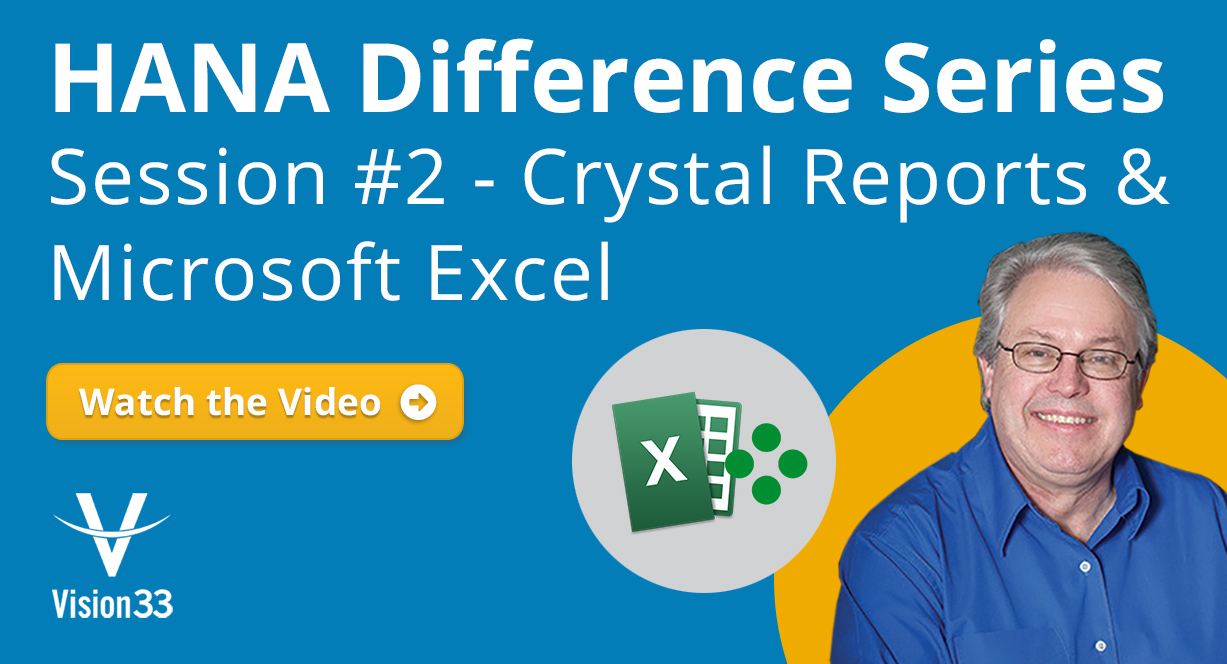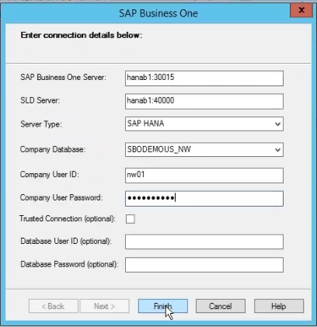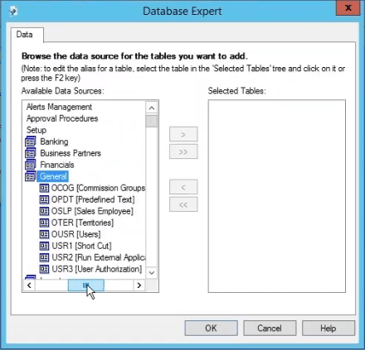Safeguarding Your Company’s Lifeblood: Cloud ERP Offers Unrivaled Data Security
SAP Business OneProtect your company's vital data with a secure Cloud ERP solution. Discover the unmatched data...

July 10, 2018
Blog > Crystal Reports & Excel: The SAP HANA Difference Part 2
In part 2 of the SAP HANA Difference, demo video series, Vision33's Carl B. Lewis discussed how SAP Crystal Reports could directly connect with SAP HANA, the in-memory database, to remove complexity and provide users with protected and intelligent, real-time data to power reporting.
But before a user accesses high-quality data from the system, step one is to connect SAP HANA to SAP Crystal Reports. Luckily, SAP HANA is an intuitive in-memory analytics platform and is easy to navigate.
In this article, we’ll summarize some of the highlights from Lewis' recent video demonstration. If you want to know more, please check out the full video at the link below.
Connecting SAP HANA to SAP Crystal Reports
First, users should open SAP Crystal Reports Designer and follow these steps.
Start with a blank report under the Start a new report menu at the top of the page.

And there you have it. The basic way to create a report from table connections.
Under file options then the Database tab, Tables, and Fields section, choosing the “Show both” radio button will provide users with access to see both the name and the description of the field as they are selecting them to add to report for a greater level of understanding. These options are global, so each time the application is open, they will be set. Making it a little easier to find the data you want for your report. You can see this in the image below. the field IDs are followed by descriptions in brackets.

What If You Want to Do Reporting with Microsoft Excel Instead?
There are many out of the box views in SAP HANA. You can use them in Microsoft Excel. In the SAP HANA menu users will note the Microsoft Excel Report and Interactive Analysis. Many of these are used in standard configurations and will execute here and run outside of SAP Business One. But to utilize the menu, you have to have an SAP Business One license. But what if a company doesn’t have an SAP Business One license to extend to an employee that needs access to create and access reports using Microsoft Excel?
It can be done. Watch the SAP HANA: The HANA Difference Series #2 Crystal Reports and Excel video to find out how.
Check out additional sessions of our HANA Difference Series below!
Subscribe to our newsletter to receive our latest blog posts, case studies and ERP news delivered straight to your inbox.
Protect your company's vital data with a secure Cloud ERP solution. Discover the unmatched data...
Unlock the power of SAP Business One Query Generator with Vision33’s expert tips & tricks, designed...
View SAPA Investment Group’s success story to learn how implementing SAP Business ByDesign with...
Recieve our latest blog posts, case studies, and ERP news
delivered straight to your inbox.